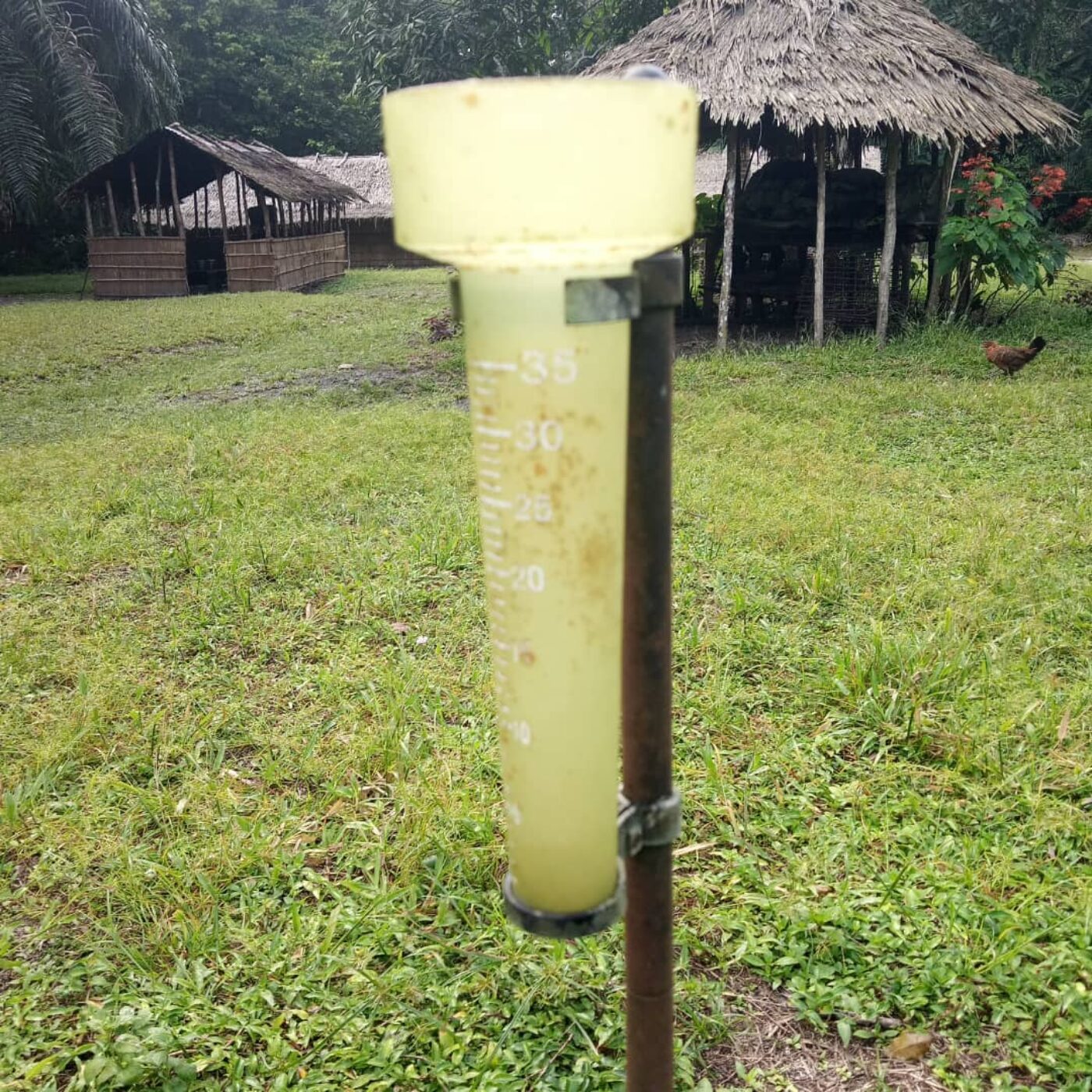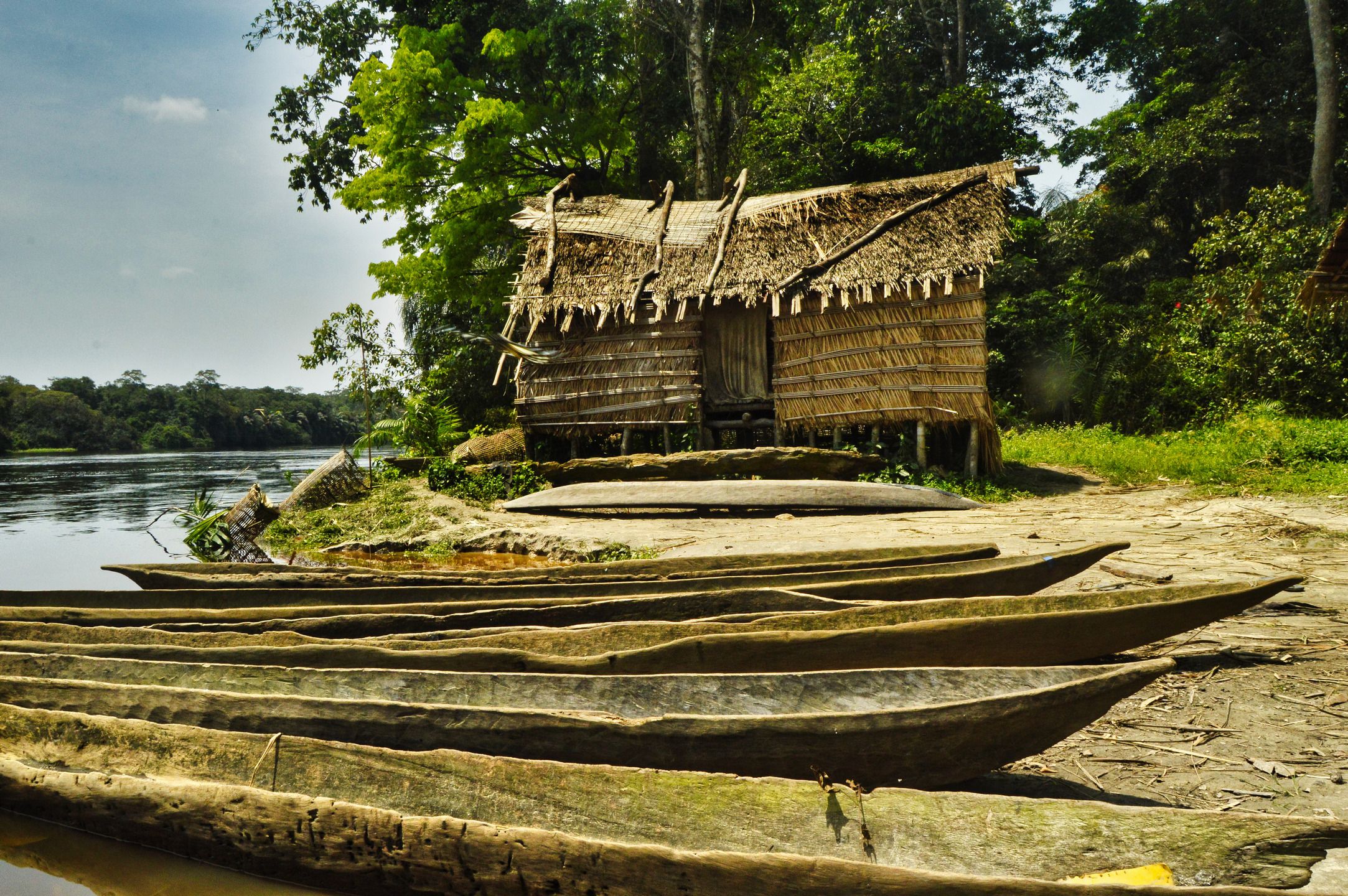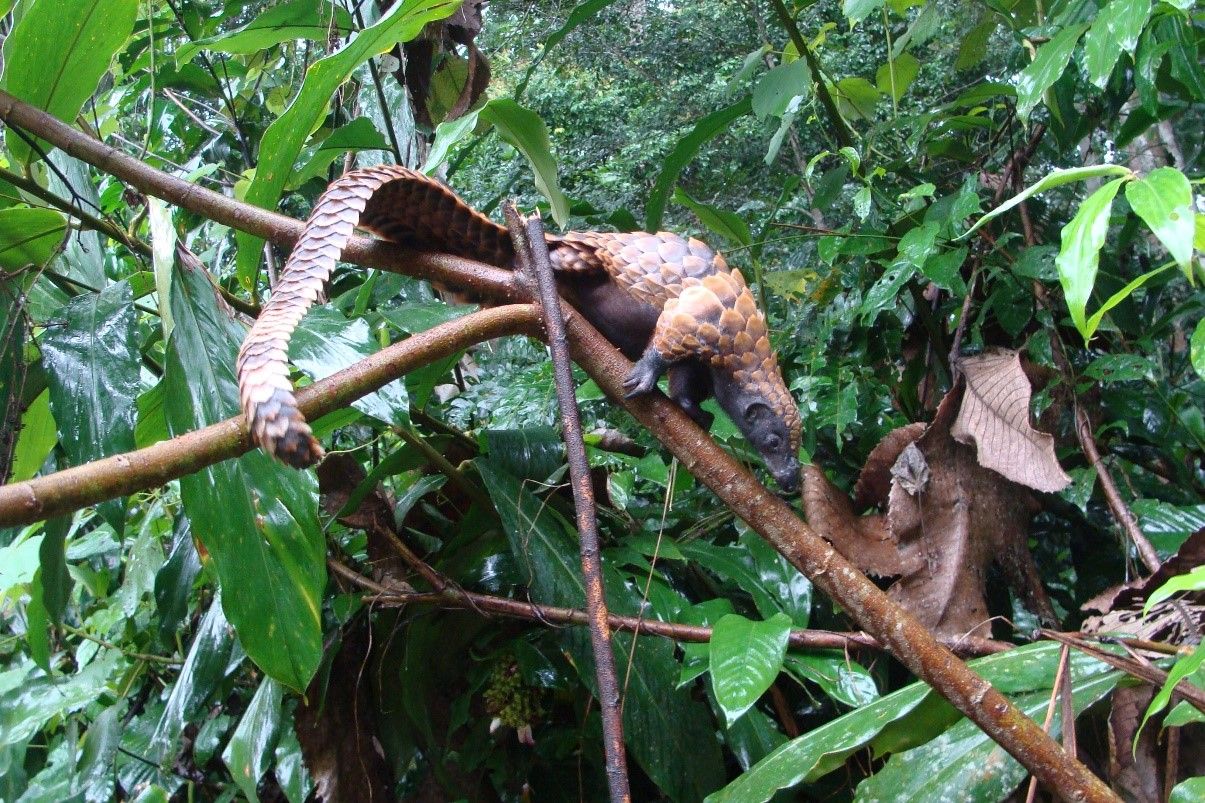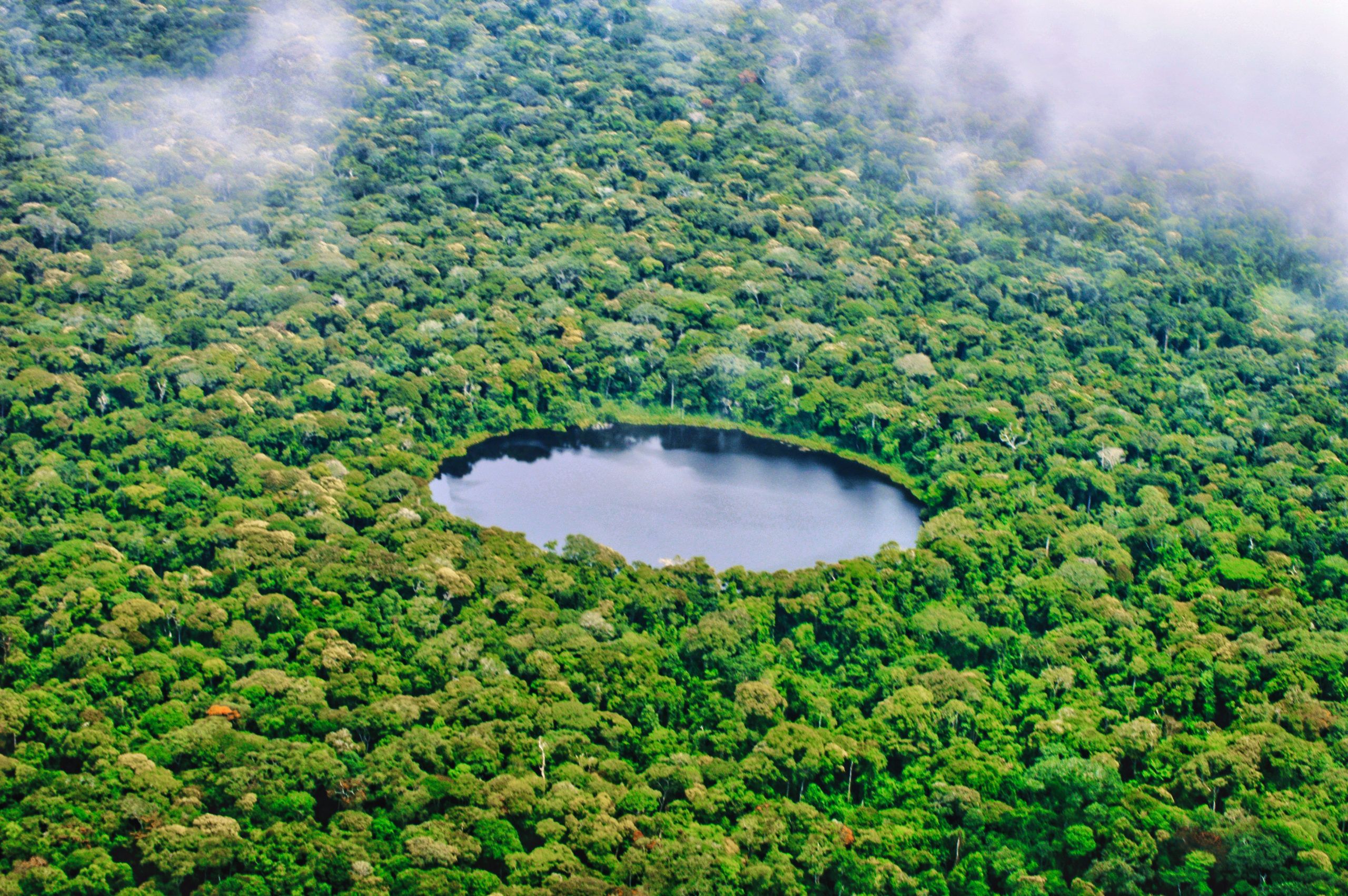Weather Disturbances and Their Impact on Salonga National Park

As part of its bio-monitoring research at the Etate station, located in the northern block of Salonga National Park (SNP), SCI has operated a weather data collection unit since 2014. Daily recordings of key parameters contribute to studies such as bonobo nest longevity and the use of bais (forest clearings) by elephants. These data provide critical insights into the already evident effects of climate change within the central Congo basin.
Alarming Climatic Trends
Since 2023, SCI has observed significant anomalies in rainfall patterns. The typical dry season in July extended unusually into September. In 2024, the expected February drought was replaced by a rainy season, and rainfall from April to July was considerably lower than average. These disruptions have notably impacted water levels in the Salonga River.
Temperature trends have also been alarming. January 2024 marked the start of a rise in Etate’s average temperatures, with January, March, April, May, June, and August recording the highest temperatures since monitoring began. If these trends persist, they could have severe consequences for the park’s flora and fauna.
Call for Expanded Monitoring
Currently, SCI’s weather monitoring is limited to the Etate station. To better understand the broader impacts of these climatic changes on Salonga’s biodiversity and ecosystem services, SCI advocates for the installation of additional automated weather stations across the park. Expanded monitoring would allow for a more comprehensive assessment of climate change’s effects and help inform conservation strategies.



